I am working on a machine learning model that predicts the displacements of the nodes in an object after applying a force.
My model is trained with the data generated from FEM Abaqus and I want to reconstruct the mesh from the coordinates of the nodes, predicted by the ML model. So far, I have been able to recreate a representation with a plotly 3D scatter plot from the nodes coordinates but it is not a mesh. The data that I have exist in an Abaqus inp file and consist of the coordinates of the nodes as well as which nodes contributing to which elements (picture below).

I would appreciate it if anyone can help me with the problem. Thank you.
